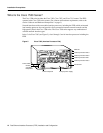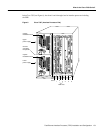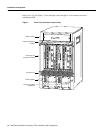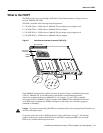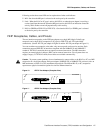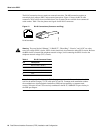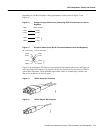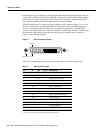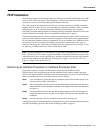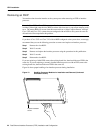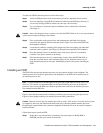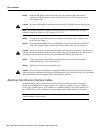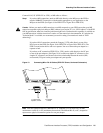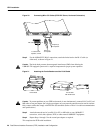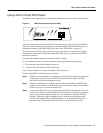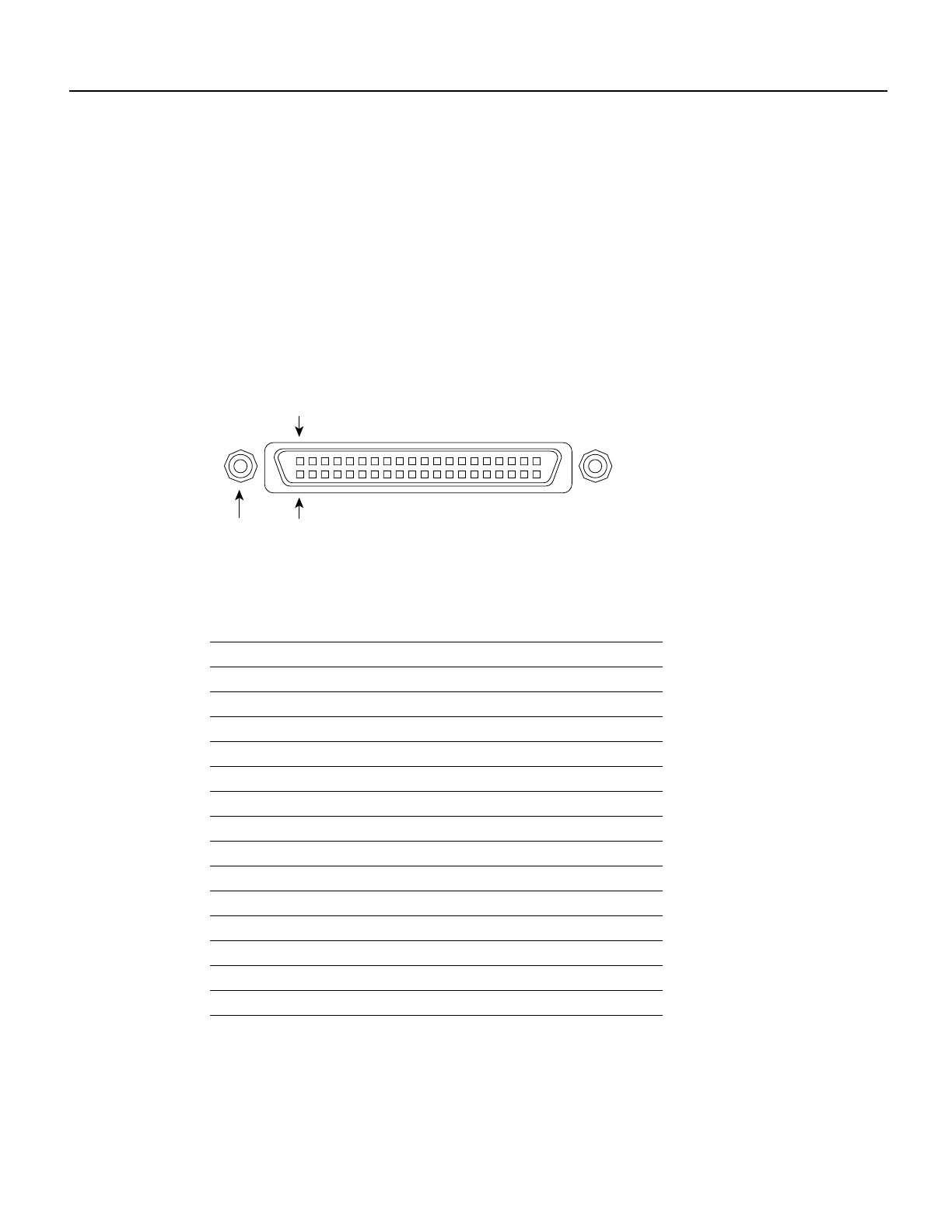
20 Fast Ethernet Interface Processor (FEIP) Installation and Configuration
What Is the FEIP?
Depending on the type of media you use between the MII connection on the port adapter and your
switch or hub, the network side of your 100BASE-T transceiver should be appropriately equipped
with SC-type or ST-type connectors (for optical fiber), BNC connectors, and so forth. Figure 17
shows the pin orientation of the female MII connector on the port adapter.
The MII receptacle uses 2-56 screw-type locks, called jackscrews (shown in Figure 17), to secure
the cable or transceiver to the MII port. MII cables and transceivers have knurled thumbscrews
(screws you can tighten with your fingers) that you fasten to the jackscrews on the FEIP MII
connector. Use the jackscrews to provide strain relief for your MII cable. (The RJ-45 modular plug
has strain relief functionality incorporated into the design of its standard plastic connector.)
Figure 17 shows the MII connector.
Figure 17 MII Connection (Female)
Table 3 lists the MII connector pinout and signals. MII cables are available commercially.
Table 3 MII Connector Pinout
Pin
1
1. Any pins not indicated are not used.
In Out In/Out Description
14–17 – Yes – Transmit Data (TxD)
12 Yes – – Transmit Clock (Tx_CLK)
2
2. Tx_CLK and Rx_CLK are generated by the external transceiver.
11 – Yes – Transmit Error (Tx_ER)
13 – Yes – Transmit Enable (Tx_EN)
3 – Yes – MII Data Clock (MDC)
4–7 Yes – – Receive Data (RxD)
9 Yes – – Receive Clock (Rx_CLK)
10 Yes – – Receive Error (Rx_ER)
8 Yes – – Receive Data Valid (Rx_DV)
18 Yes – – Collision (COL)
19 Yes – – Carrier Sense (CRS)
2 – – Yes MII Data Input/Output (MDIO)
22–39 – – – Common (ground)
1, 20, 21, 40 – – – +5.0 volts (V)
Jackscrew Pin 1
Pin 21
H2943



